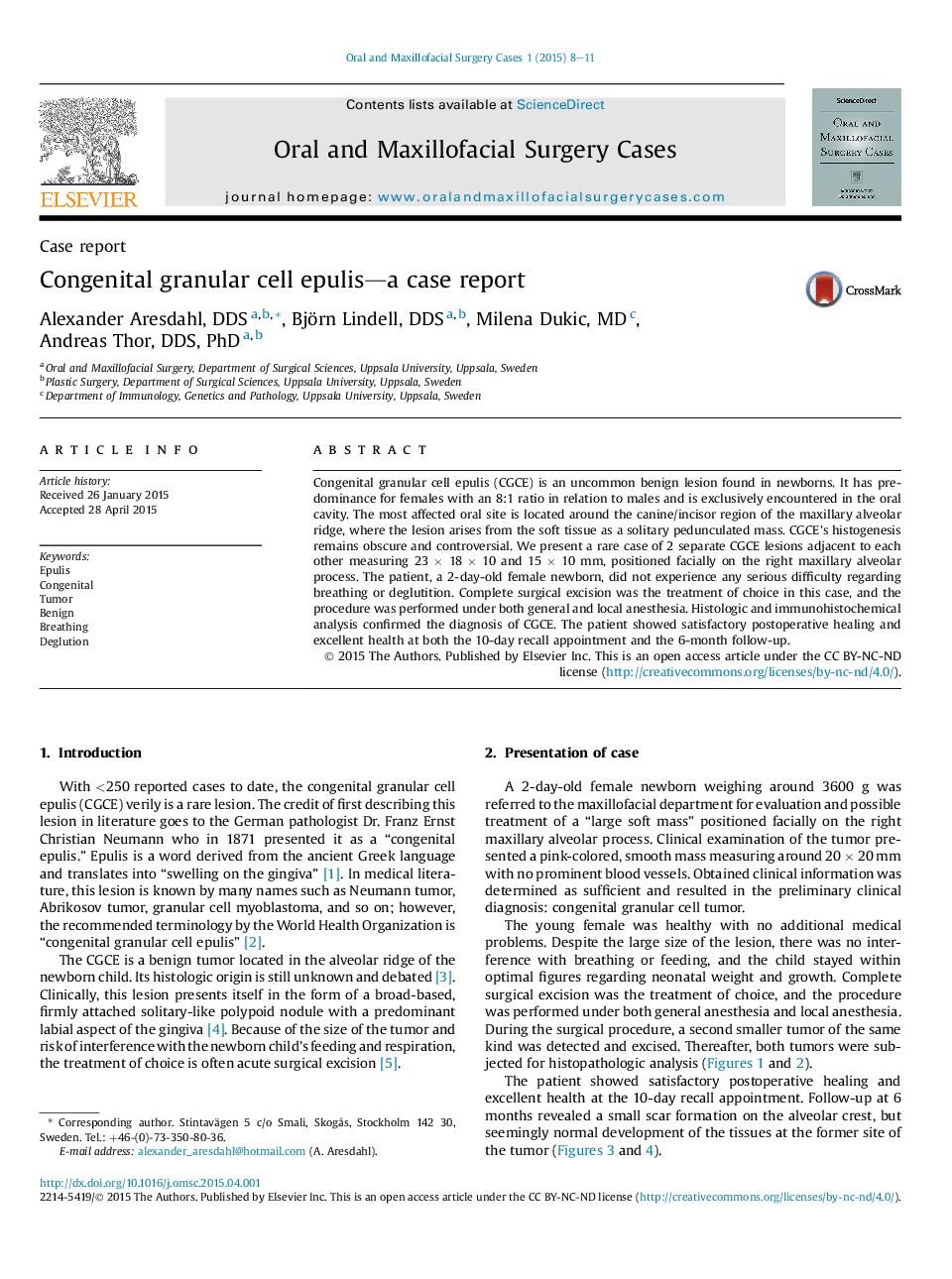| Article ID | Journal | Published Year | Pages | File Type |
|---|---|---|---|---|
| 3162881 | Oral and Maxillofacial Surgery Cases | 2015 | 4 Pages |
•Congenital granular cell epulis (CGCE) is an uncommon benign lesion found in newborns, with <250 reported cases to date.•Its histologic origin is still unknown and debated.•To achieve an accurate diagnosis, it is essential that all data, both histopathologic and clinical, are thoroughly analyzed.
Congenital granular cell epulis (CGCE) is an uncommon benign lesion found in newborns. It has predominance for females with an 8:1 ratio in relation to males and is exclusively encountered in the oral cavity. The most affected oral site is located around the canine/incisor region of the maxillary alveolar ridge, where the lesion arises from the soft tissue as a solitary pedunculated mass. CGCE's histogenesis remains obscure and controversial. We present a rare case of 2 separate CGCE lesions adjacent to each other measuring 23 × 18 × 10 and 15 × 10 mm, positioned facially on the right maxillary alveolar process. The patient, a 2-day-old female newborn, did not experience any serious difficulty regarding breathing or deglutition. Complete surgical excision was the treatment of choice in this case, and the procedure was performed under both general and local anesthesia. Histologic and immunohistochemical analysis confirmed the diagnosis of CGCE. The patient showed satisfactory postoperative healing and excellent health at both the 10-day recall appointment and the 6-month follow-up.
